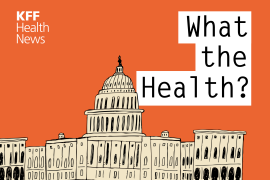Health Premiums for Current and Retired Federal Employees To Rise Average of 10.6% Next Year
Health insurance premiums for federal workers and retirees covered through the Federal Employees Health Benefits Program will increase an average 10.6% next year, the fourth consecutive year of double-digit increases, the Bush administration announced Sept. 16, the Washington Post reports. For an employee with standard family coverage through Blue Cross and Blue Shield, which covers more than 50% of those in FEHBP, biweekly premiums will increase $7.66, to $112.88. An employee with standard individual coverage through BCBS will pay $3.24 more in premiums every two weeks, bringing the total premium to $48.90 biweekly. For all plans, employees with standard family coverage will pay an average of $11.95 more biweekly, bringing the premium to $113.57 biweekly. For an individual across all plans, biweekly premiums will increase an average of $5.01, to $50.21. Office of Personnel Management officials said that premium increases will vary by plan, with almost 40% of plans having increases of more than 15% and about the same percentage of plans having premium increases of 10% or less, the Post reports (Lee, Washington Post, 9/17). Premiums for HMOs will increase an average of 9.9%, while premiums for fee-for-service plans will increase an average of 10.7%. On average, the government pays for about 70% of the premiums (Pear, New York Times, 9/17). OPM officials said that most of the premium increases are because of increasing prescription drug costs and increased use of health care services as the federal workforce ages, the Post reports. Premiums increased 11.1% this year, 13.3% in 2002 and 10.5% in 2001 (Washington Post, 9/17). OPM officials also announced that for the first time in five years, the number of health plans participating in FEHBP will expand, from 188 this year to 205 next year (New York Times, 9/17).
Model for the Private Sector?
OPM Director Kay Coles James said that the increases "could have been worse," noting that premium increases in the private sector and among many other government entities are expected to be even higher, the Post reports. For example, the California Public Employees Retirement System anticipates premiums for state employees enrolled in HMOs will rise 17.6% next year, according to the Post (Washington Post, 9/17). Edward Kaplan, senior vice president of the benefits consulting firm Segal, said that federal workers' premium increases would be "significantly lower than the increases for most private employers, which are expected to average 14.5% next year." Because of the relatively smaller increase in premiums, FEHBP could be a "model for the private sector and for Medicare," according to administration officials, the Times reports. FEHBP covers about 8.3 million people -- 2.2 million active workers, 1.8 million retirees and 4.2 million dependents -- at an annual cost of $26 billion to the federal government, according to the Times. Federal workers have a choice of various coverage options through many private health plans, and the program tries to obtain lower rates and additional benefits though "negotiations and persuasion, with a minimum of mandates and regulations," the Times reports. Abby Block, deputy associate director of OPM, said that the government held premium increases below the national average without making any substantial cuts in benefits, while many private employers have reduced benefits. "In sharp contrast to trends in the private sector, the federal employee health plans continue to cover all eligible retirees and their spouses," James added (New York Times, 9/17).
Reaction
Colleen Kelley, president of the National Treasury Employees Union, said that the "continued double-digit increases not only are unfair to federal workers in that they far outstrip any pay increases they receive, they serve as a serious impediment to successful recruiting and retention efforts by the federal government." Alwyn Cassil, a spokesperson for the Center for Studying Health System Change, said that while the federal premium increases are lower than those anticipated in the private sector, the premiums are "growing much faster than increases in wages, increases in growth of the economy and increases in inflation," adding, "That means that more and more money will be coming out of people's pockets to pay for health care" (Washington Post, 9/17). But Robert Moffit, director of health policy studies at the Heritage Foundation, said, "The new rates for federal employees show you can have a program that delivers high-quality health care and restrains costs without price controls or thousands of pages of regulations" (New York Times, 9/17).






